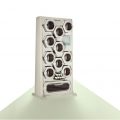Within ten minutes Mr. Ripley with agilitythe magician resolved with the aid of electricity two more great kitchen problems - storing supplies and washing dirty dishes. He showed an electric cabinet-fridge, which not only did not require ice, but, on the contrary, prepared it in the form of neat transparent cubes in a special white bath, similar to a photographic one. In the closet there were compartments for meat,, eggs and fruits. And. Ilf, E. Petrov. "One-story America"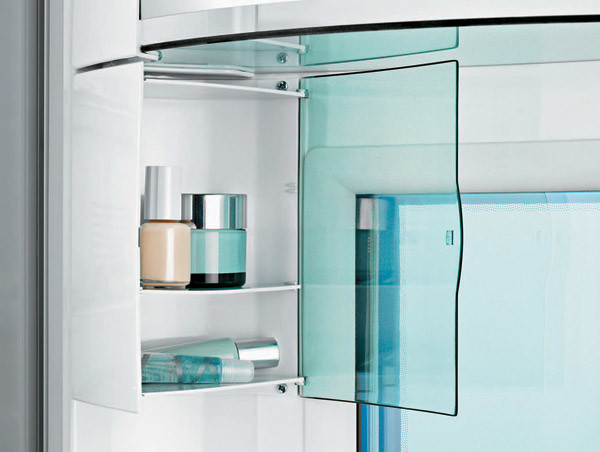 How to choose a refrigerator?On the market there is a huge number of models, differing in both design and size and design. Would you like to buy equipment with side-by-side doors and a stainless steel case? No problems. Color refrigerator, painted "for Khokhloma"? How much you want! Compact but roomy model with a large freezer and the possibility of building under the kitchen countertop? Please! It is not surprising that the consumer is slightly confused by such abundance. Which refrigerator to choose? What is the most convenient design? The questions are complex, and advertisements do not give clear answers to this account. Well, let's try to deal with the "park of refrigeration" on their own.
How to choose a refrigerator?On the market there is a huge number of models, differing in both design and size and design. Would you like to buy equipment with side-by-side doors and a stainless steel case? No problems. Color refrigerator, painted "for Khokhloma"? How much you want! Compact but roomy model with a large freezer and the possibility of building under the kitchen countertop? Please! It is not surprising that the consumer is slightly confused by such abundance. Which refrigerator to choose? What is the most convenient design? The questions are complex, and advertisements do not give clear answers to this account. Well, let's try to deal with the "park of refrigeration" on their own.
What we see? Market sir
The history of household refrigerators begins in 1917year; it was then that General Electric was the first company in the world to start serial production of these devices. Not so acutely, but since then the question of which refrigerator is better has been relevant? There is a fierce competition in the Russian refrigeration equipment market. For a long time, European and American companies held the leading positions. These are Miele, BSH Bosch und Siemens Hausgeräte (Germany, Bosch, Gaggenau, Neff, Siemens brands); General Electric, Whirlpool (USA, Whirlpool, Maytag brands); Electrolux Group (Sweden, AEG-Electrolux, Electrolux, Zanussi brands); Indesit Company (Italy, Ariston, Indesit, Stinol brands); Candy Group (Italy, Candy, Hoover brands); Gorenje (Slovenia); Atlant (Belarus). It is especially worth noting the companies specializing in the production of refrigeration equipment, such as Liebherr (Germany) and Vestfrost (Denmark). In addition, manufacturers from Turkey and Southeast Asia are currently expanding their presence in our market: Arcelik (Turkey, Beko, Blomberg brands); LG Electronics (Korea, LG brand); Samsung Electronics (Korea, Samsung brand); Matsushita Electric Industrial (Japan, Panasonic brand); Sharp Electronics (Japan, Sharp brand). Confused about which brand of refrigerator is better? Or better yet, the one you need! It remains to find out the details.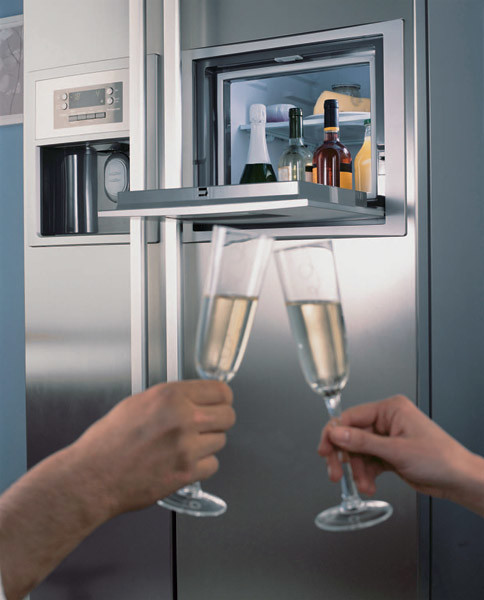 Which fridge is better?
Which fridge is better?
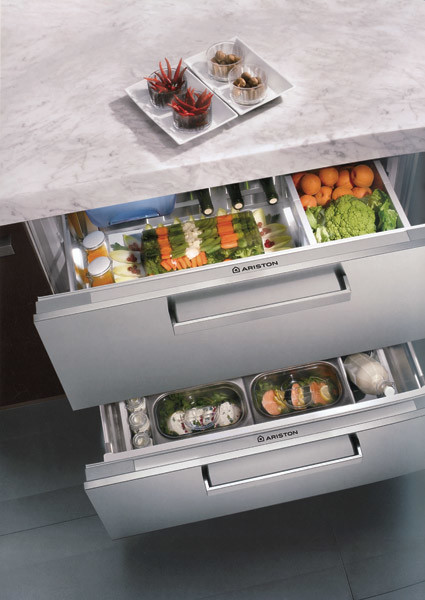
 Domestic economy is gradually “thawing”industry: the market offers products from the Krasnoyarsk Biryusa Refrigerator Plant, the Moscow Home Refrigerator Plant (ZIL brand), the Saratov Electric Aggregate Production Association (Saratov brand), Iceberg OJSC (Smolensk brand) and other Russian manufacturers. Some brands occupy “their” market segment. For example, Viking (USA), Kuppersbusch (Germany), Gaggenau, Miele, Liebherr equipment is traditionally perceived as prestigious and expensive; Indesit or Atlant refrigerators are usually considered middle class. But one can judge the quality of a refrigerator by its brand only with certain reservations. Moreover, the service life of household refrigerators presented on the Russian market should be at least 10 years.
Domestic economy is gradually “thawing”industry: the market offers products from the Krasnoyarsk Biryusa Refrigerator Plant, the Moscow Home Refrigerator Plant (ZIL brand), the Saratov Electric Aggregate Production Association (Saratov brand), Iceberg OJSC (Smolensk brand) and other Russian manufacturers. Some brands occupy “their” market segment. For example, Viking (USA), Kuppersbusch (Germany), Gaggenau, Miele, Liebherr equipment is traditionally perceived as prestigious and expensive; Indesit or Atlant refrigerators are usually considered middle class. But one can judge the quality of a refrigerator by its brand only with certain reservations. Moreover, the service life of household refrigerators presented on the Russian market should be at least 10 years.
We understand the design
The working capacity of the refrigerator is divided into two orseveral chambers (compartments), for example, a refrigerator with an average air temperature of 5-10 °C and a freezer, which maintains a negative temperature. In modern models, so-called freshness zones are also allocated into separate chambers, where the temperature is maintained slightly above zero (usually +2 °C). This division into compartments allows you to “comfortably” store all products - both those that are prescribed a relatively high temperature, and those that should be deep frozen. By the way Experienced housewives know that storing at too low a temperature can hopelessly spoil the taste of food. It is no coincidence that, for example, chilled meat is valued higher than frozen. Even products such as chocolate and butter are afraid of frost, not to mention delicate fruits, vegetables and herbs. Therefore, you should follow the storage rules. Many refrigerator models use pictograms indicating which shelves are best for placing certain products. Each chamber is usually equipped with its own door. This is convenient because it allows you to maintain the set temperature and humidity more accurately. In general, the ability to maintain temperature and humidity conditions within strictly specified parameters can be considered a criterion for the quality of a refrigerator. For example, if the temperature readings on the shelf near the door and in the depths of the chamber differ by 1 °C, this is very good. To achieve such results, refrigerators use forced ventilation systems. In some models, they can be equipped with a carbon filter - so that the aroma of cheese or fish does not "disturb" the fruit dessert located nearby. To accurately maintain the set temperature, a number of models use so-called ultra-fast cooling systems (not to be confused with ultra-fast freezing systems). For example, you came home from the market and put the purchased products into the refrigerator chamber. The refrigerator reacts sensitively to a local increase in temperature and directs an intense flow of cold air to the "hot spot". Such a system allows you to avoid an increase in the temperature of products stored on adjacent shelves, contributing to their better preservation.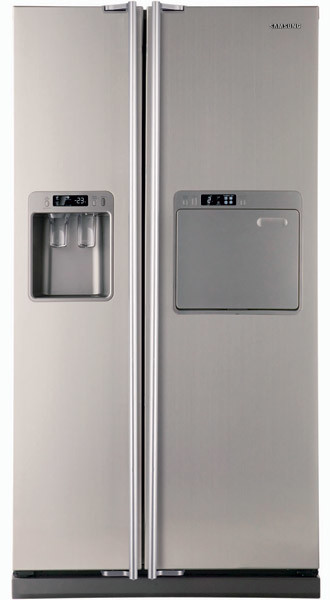
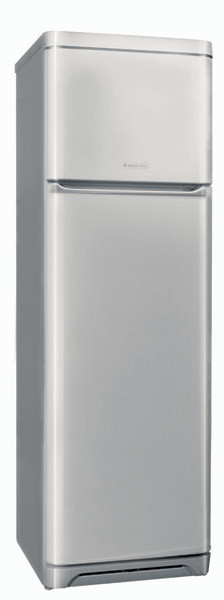

 There are several design types.refrigerators depending on the location of the freezer - top, side (Side-by-Side models) or bottom. In the latter case, the freezer is usually the largest capacity. But choose the type of refrigerator should be according to the rules of ergonomics: at the eye level should be the office (refrigerator or freezer), which you often use. It is also important physique owners of equipment. It can be difficult for tall people to “bend in three deaths”, and low, on the contrary, it is inconvenient to get food from the depths of the upper shelf, which is sometimes located at a height of 170–180 cm. The number of cameras can reach four or even five. As a rule, these are Side-by-Side models, resembling wardrobes in design (sometimes side-by-side refrigerators with a pull-out lower section French Door are in a separate group). There are single-chamber refrigerators. Most often, these are compact models designed for embedding in kitchen furniture, but there are also stand-alone devices. By placing a refrigerator and freezer under the worktop next to it, you will get a full roomy refrigerator. And you can choose a ready-made solution of this kind. For example, the kitchenette ART 306 (Whirlpool) combines a cooktop, a sink and a fridge in a common building.
There are several design types.refrigerators depending on the location of the freezer - top, side (Side-by-Side models) or bottom. In the latter case, the freezer is usually the largest capacity. But choose the type of refrigerator should be according to the rules of ergonomics: at the eye level should be the office (refrigerator or freezer), which you often use. It is also important physique owners of equipment. It can be difficult for tall people to “bend in three deaths”, and low, on the contrary, it is inconvenient to get food from the depths of the upper shelf, which is sometimes located at a height of 170–180 cm. The number of cameras can reach four or even five. As a rule, these are Side-by-Side models, resembling wardrobes in design (sometimes side-by-side refrigerators with a pull-out lower section French Door are in a separate group). There are single-chamber refrigerators. Most often, these are compact models designed for embedding in kitchen furniture, but there are also stand-alone devices. By placing a refrigerator and freezer under the worktop next to it, you will get a full roomy refrigerator. And you can choose a ready-made solution of this kind. For example, the kitchenette ART 306 (Whirlpool) combines a cooktop, a sink and a fridge in a common building.
Big refrigerators - big swimming!
Modern refrigerators are muchsurpass previous years' models in capacity. Side-by-Side devices with a useful volume of 500-700 liters have not yet become widespread, but this is probably a matter of time and lack of space in kitchens. As for the average cost of refrigerators, it has been decreasing in recent years. After all, inexpensive Side-by-Side models from manufacturers such as Beko, LG, Samsung can be purchased for 30-35 thousand rubles. Economy-class two-chamber refrigerators for 300-400 liters are even cheaper - from 13-15 thousand rubles to 18-20 thousand rubles (for comparison: the total useful volume of the former leader of the domestic industry "ZIL-Moscow" is 165 liters). And a compact (not built-in) refrigerator "no frills" with a refrigeration chamber with a capacity of 100-120 liters can be purchased for 9-11 thousand rubles.


 Sometimes this affordability can playwith buyers is a cruel joke. A bulky unit in a small room can significantly complicate life. Not to mention such banality as “too narrow doors”. Therefore, choosing a large technique, make sure that its dimensions do not exceed the width of the doorway and you can generally drag it into the house. Meanwhile, if the size of your home allows, it is better to prefer a relatively low, but wide refrigerator. This design is by no means the last fashion, but it is really much more convenient to use it. Try to “fish out” from the depths of a narrow cabinet what you need when it is full! Yes, and products are stored much better if there is space between them for normal ventilation. By the way, if you believe European statistics, the optimal volume of a refrigerator is directly proportional to the number of family members. If a person lives alone, he needs a device with a capacity of up to 150 liters. For two to four people need a refrigerator with a capacity of 200-280 liters. And as a family of five or more people need to think about the locker larger - no less than 300-320 l!
Sometimes this affordability can playwith buyers is a cruel joke. A bulky unit in a small room can significantly complicate life. Not to mention such banality as “too narrow doors”. Therefore, choosing a large technique, make sure that its dimensions do not exceed the width of the doorway and you can generally drag it into the house. Meanwhile, if the size of your home allows, it is better to prefer a relatively low, but wide refrigerator. This design is by no means the last fashion, but it is really much more convenient to use it. Try to “fish out” from the depths of a narrow cabinet what you need when it is full! Yes, and products are stored much better if there is space between them for normal ventilation. By the way, if you believe European statistics, the optimal volume of a refrigerator is directly proportional to the number of family members. If a person lives alone, he needs a device with a capacity of up to 150 liters. For two to four people need a refrigerator with a capacity of 200-280 liters. And as a family of five or more people need to think about the locker larger - no less than 300-320 l!
All the signs of modernity
Modern refrigerators are distinguished by the presence ofa number of design improvements that ensure reliability and comfortable operation of these devices. Among the many innovations, the following should be noted first:
- Antibacterial protection.To suppress the activity of bacteria in refrigerators, two types of protection are used. In one case, the inner chamber is made of a material containing silver ions. These are, for example, the AntiBacteria system from Siemens, Silver Nano from Samsung, antibacterial coating is used in a number of models from Fagor (Spain), Ariston, Blomberg, Bosch, Gorenje and other manufacturers. The second type of protection is used by Japanese companies Sharp and Toshiba. Their refrigerators are equipped with built-in ion generators. The latter not only destroy microorganisms, but also prevent the spread of odors. Sometimes, to clean the air in refrigerator chambers from microorganisms and odors, filtration systems are used, as, for example, in a number of Whirlpool, Electrolux models.
- Quick freezing ("super freezing").This freezer function allows you to quickly freeze products at a low temperature (in most cases it is -25 °C, and in some models it goes even lower). Quick freezing is useful for better preservation of many products. But storing them at such a low temperature for a long time does not make sense, and is also unprofitable from an economic point of view (in this mode of operation, the refrigerator consumes a lot of energy).
- "Freshness zones".These compartments occupy an intermediate position between the refrigerator and freezer chambers in terms of their temperature regime. They are good for storing fresh fish, greens, fresh meat and other delicate products that do not tolerate freezing and at the same time do not tolerate long-term storage in the refrigerator chamber. According to air humidity, the "freshness zones" can be divided into "dry" and "wet"; there are also varieties in which the air humidity can be regulated.
- No Frost system.This popular technology prevents the formation of ice on the walls of the "freezer". Refrigerators with the No Frost system do not need to be defrosted periodically (housewives know how long and troublesome this procedure can be). The main disadvantage of the technology is the accelerated dehydration of products. To avoid this, products must be stored in moisture-proof packaging. In addition, keep in mind that the No Frost system does not eliminate the need for regular cleaning of the refrigerator and freezer chambers. The system first appeared exactly 50 years ago in the United States, but gained particular popularity in countries with a humid climate (Japan, Korea).
- Electronic control.Unlike an electromechanical thermostat, an electronic control system allows you to set the air temperature inside each compartment with high accuracy (up to 1–2 °C). In modern models, the electronic control panel, together with the LCD display, is often located on the outer surface of the door. Most refrigerator owners consider this solution convenient, although some, on the contrary, find such an “information load” excessive – you still rarely have to adjust the temperature, and the screen constantly attracts attention.
Freezing by the rulesSpecialists call the processfreezing products at temperatures above –18 ° С by slow freezing. Its main drawback is that relatively large ice crystals are formed in food tissues (whether it be meat, fish or vegetables), which destroy its structure. As a result, the products lose their attractive appearance, and their taste deteriorates. If freezing is performed at a lower temperature, then large ice crystals do not have time to form, and the products are stored much better. It is important to pre-divide them into pieces of small thickness in order to minimize the freezing time. For the same use of pre-cooling of food in the refrigerator. But it is possible to store quick-frozen products at a temperature of –15 ... –17 ° С. The main thing is not to allow defrosting: products subjected to repeated strong thermal drops risk becoming completely unappetizing.




